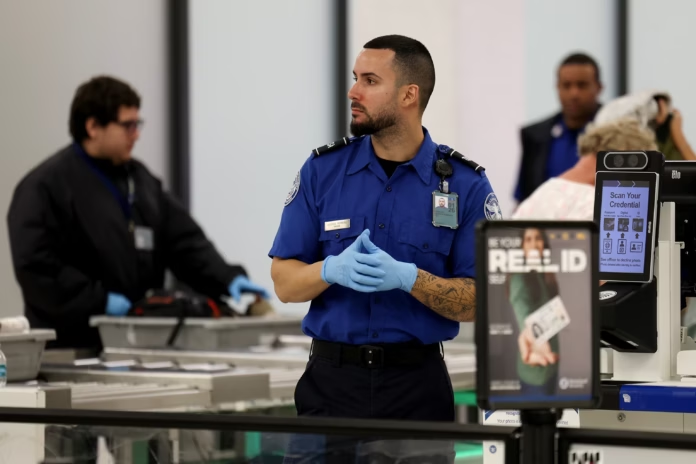Air passengers nationwide are growing increasingly anxious as the Transportation Security Administration (TSA) gets ready to implement the long-delayed Real ID mandate. Beginning May 7, 2025, every passenger 18 years and older will have to show a Real ID-approved identification or an approved alternative at airport terminals to get on a domestic flight. The transition, intended to enhance national security, has created confusion and fears of delays.
Real ID Act: A Long Time Coming
The Real ID Act was signed into law in 2005 as a 9/11-era security response to stiffen the requirements for federal facilities, military installations, and airports. Its implementation has been delayed time and again since then. Today, almost two decades later. The last deadline looms. Jose Flores, TSA’s Illinois Deputy Federal Security Director has said “TSA continues to invest in next-generation credential authentication to enhance security and efficiency.”
What Is a Real ID?
A Real ID is a driver’s license or state-issued identification card that is stamped with a star in the top right corner. This logo signifies that the ID complies with federal government requirements for identification. Passengers who are not carrying it will have to show an alternate TSA-approved form of identification, like a valid U.S. passport, or they will be turned back at the checkpoint.
Also read: Trump Administration Blocks New $1B Federal Grants to Harvard
Low Compliance Rates in Some States
Although some states have gotten on board, others are far behind. As of early May 2025, about 70% of residents in Iowa have gotten a Real ID, but only about 35% of Illinois residents have. This discrepancy gives airport officials in heavy-travel areas the red flags. TSA predicts longer lines, particularly in states with poor compliance.
Airports Make an Effort to Get the Word Out
To reduce the chaos, airports have stepped up awareness campaigns. Ashleigh Davis, Public Relations and Marketing Manager at Quad Cities International Airport, noted that “signage is being placed around the terminal, from baggage claim to airline counters.” A countdown display is also prominently featured to remind passengers of the looming deadline. “We’re doing everything possible to keep people informed,” Davis added.
Travelers Face Risk of Delays and Denial
Passengers who lack proper identification experience not only inconvenience but also potential flight delays. TSA officials say those who don’t have a Real ID can expect additional screening or be kept from entering security checkpoints altogether. This means delayed flights and added stress in already busy airport lines.
Voices From the Checkpoint
Some travelers are already experiencing the payoff of compliance. Megan Johnson, who recently got her Real ID, said, “It puts me at ease knowing that I can get in and out, and I don’t have any troubles. No one is stopping me or questioning my ID.” Her words capture a sense of relief among ready passengers, but others are still unaware or unready.
TSA Offers Travel Tips to Avoid Issues
In an effort to assist with handling the volumes, TSA is encouraging passengers to arrive 90 minutes to two hours before flights. “If you attempt the TikTok 15-minute airport challenge, I wouldn’t advise that,” Flores jokes. Officers in most airports have been trained extra to help manage the anticipated volumes, but officials are warning that patience will be needed in the weeks ahead.
Alternatives Still Accepted
For those who don’t have a Real ID, don’t despair. Travelers can still carry alternative IDs such as a U.S. passport, military ID, or DHS Trusted Traveler card. A complete list of approved IDs is on the TSA website, but few travelers are aware of these.
Conclusion: Prepare Now or Risk Travel Disruption
With the May 7 deadline closing in, both airports and TSA are calling on the public to move quickly. The Real ID deadline is no longer in the future but it’s now. Delays, confusion, and even denied boarding may become a regular occurrence unless travelers act now. The word is out: obtain your Real ID, come early, and be prepared to adjust.








